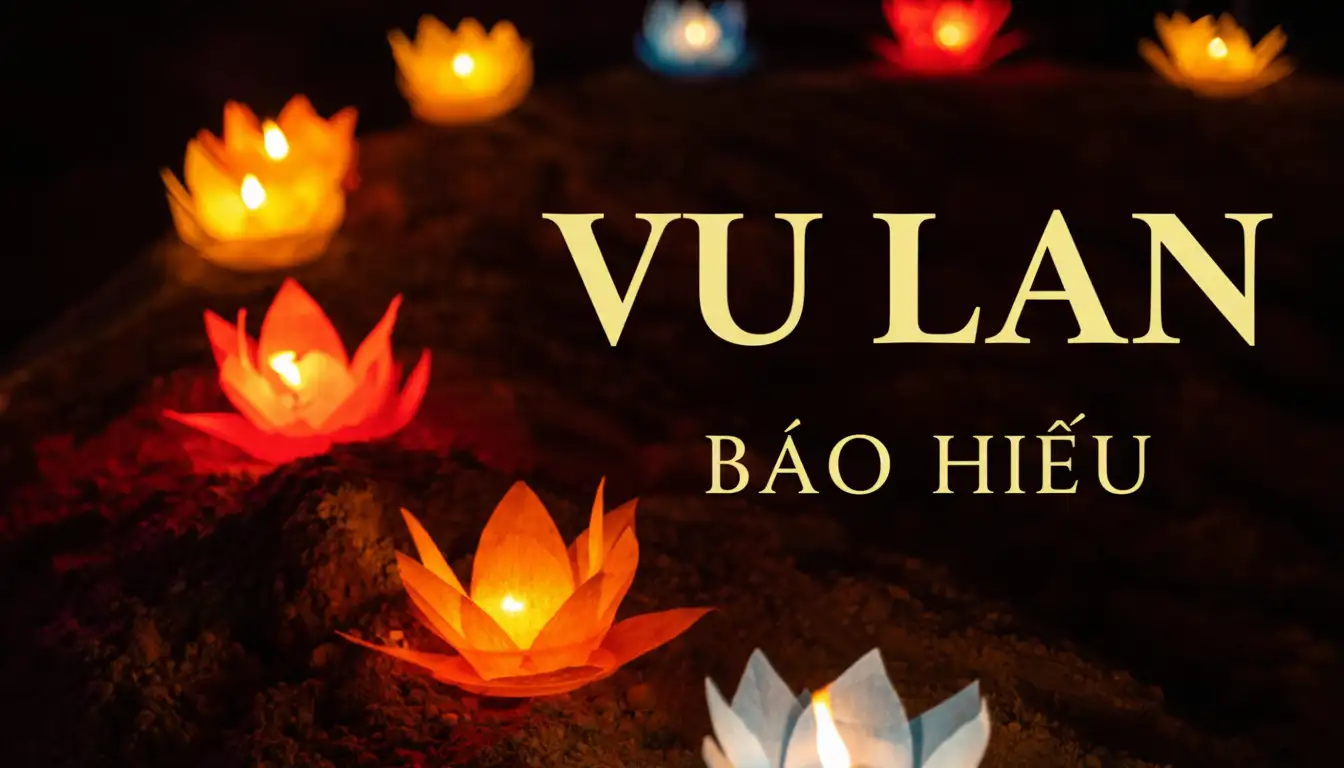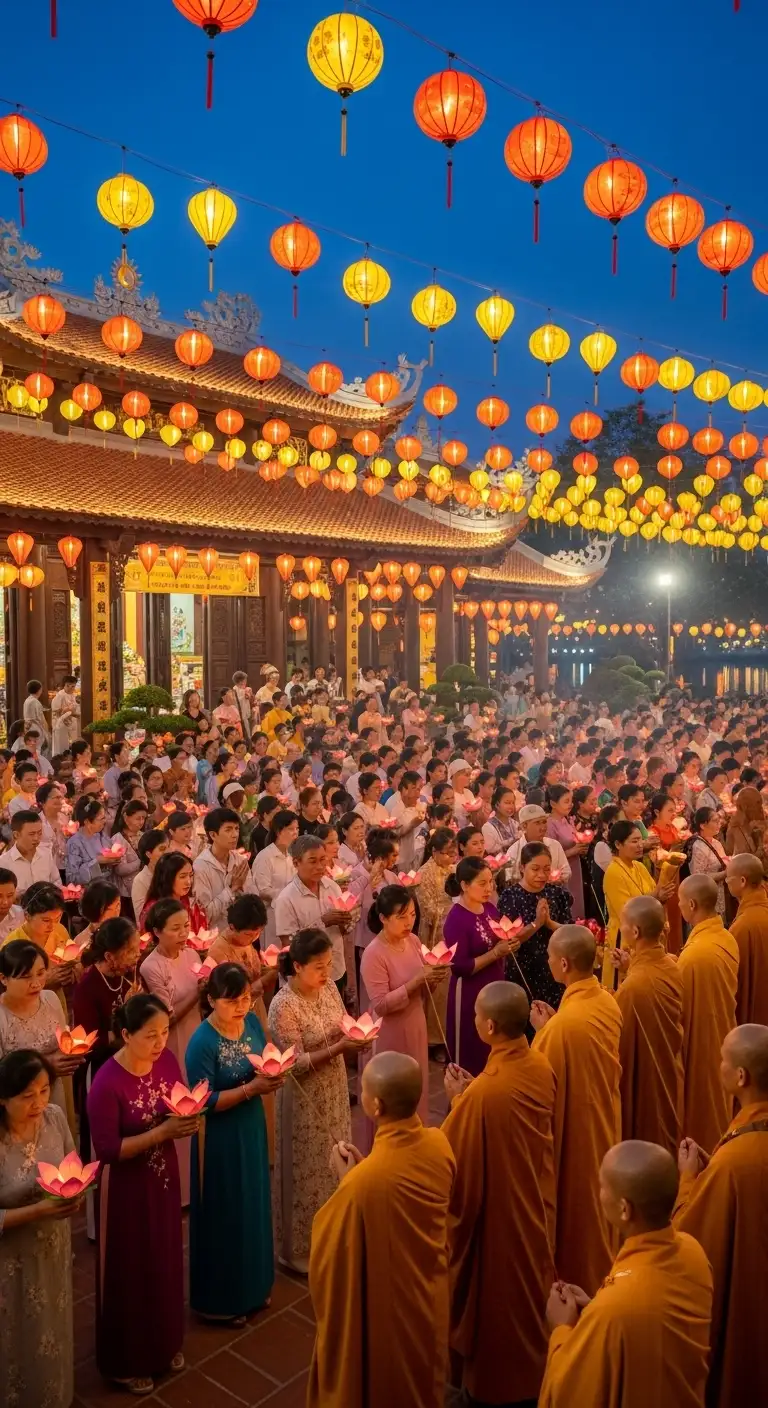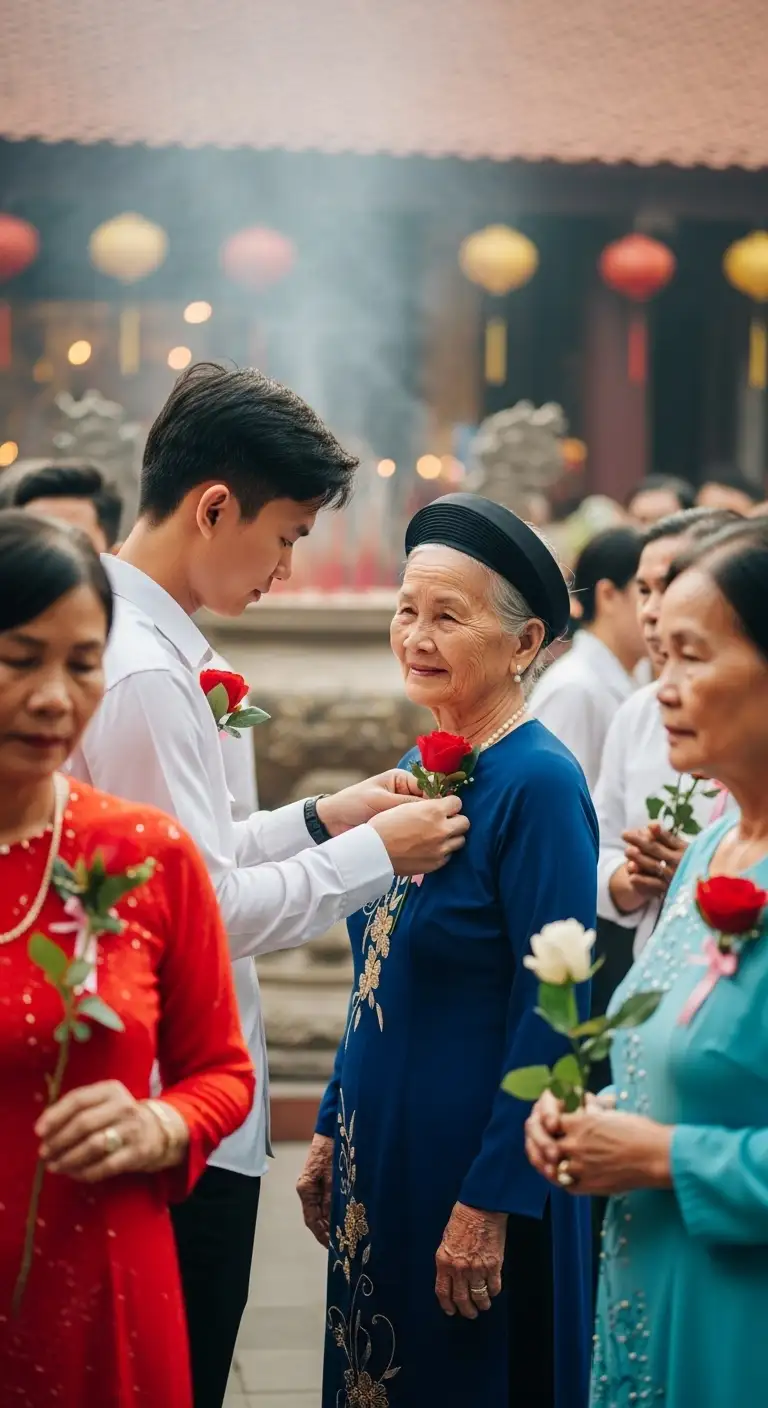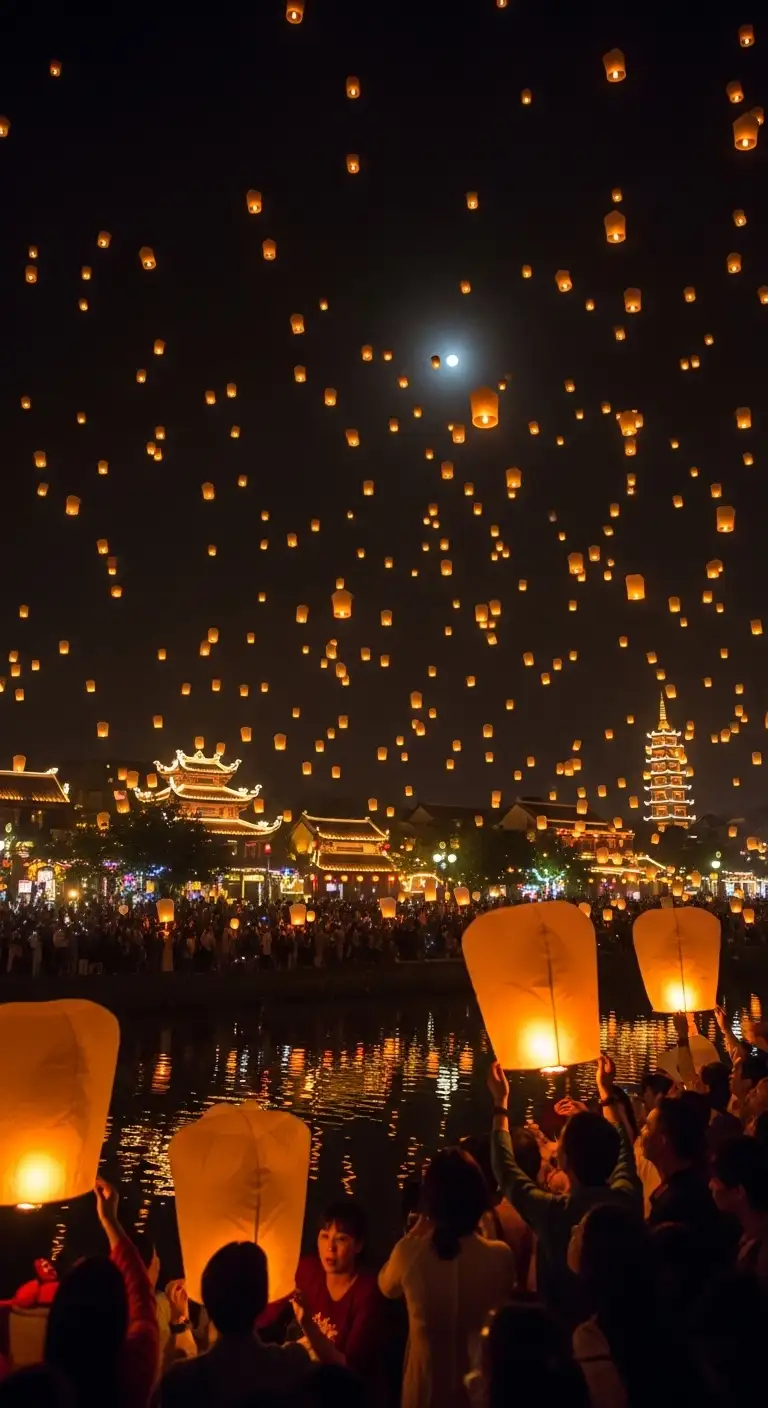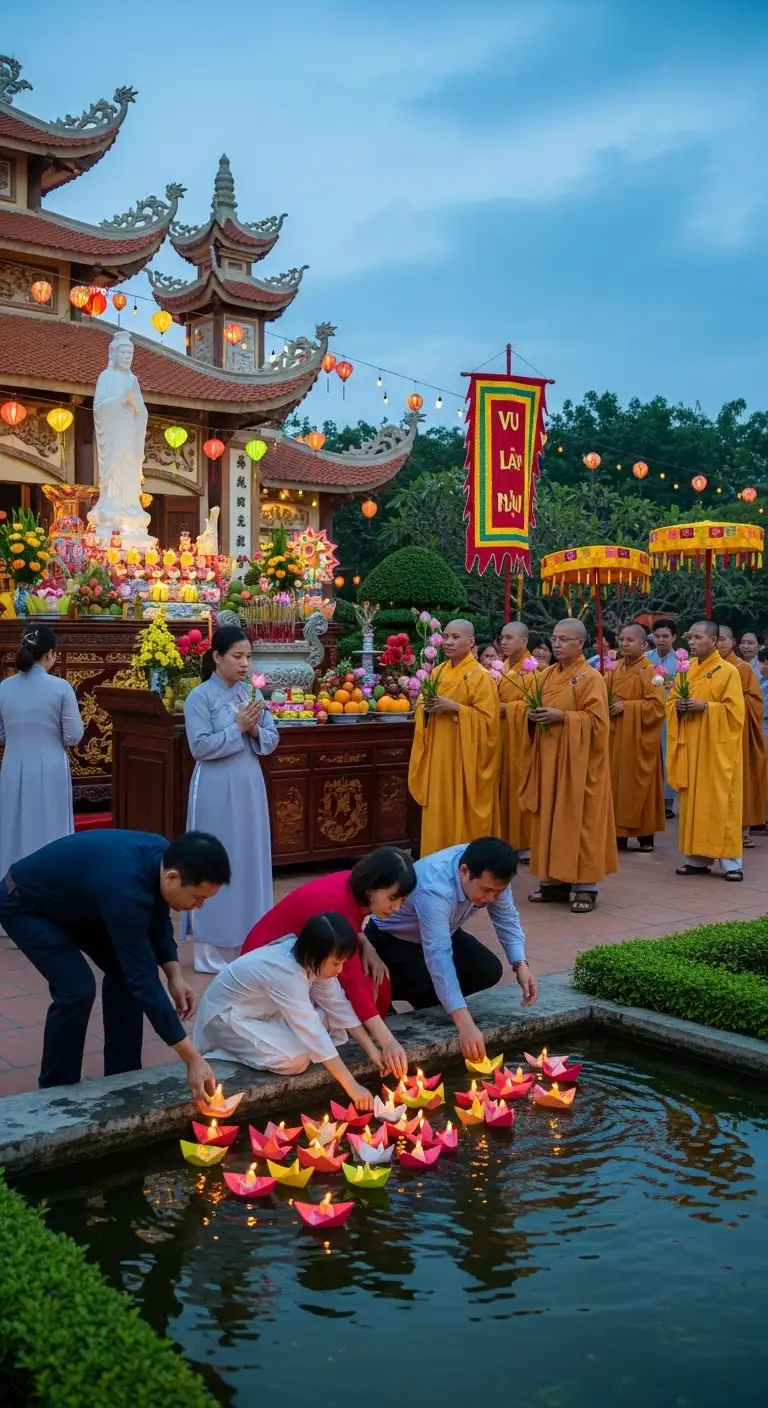Essential Information
| Data Field (Title) | Content | Icon/Note |
|---|---|---|
| Official Vietnamese Name | Lễ Vu Lan | Based on the Sanskrit word 'Ullambana' (hanging upside down in suffering). |
| Common English Names | Vietnamese Mother's Day or Wandering Souls' Day (Hungry Ghost Festival). | Emphasizes gratitude to parents and assistance to deceased ancestors. |
| Festival Date | 15th day of the 7th Lunar Month (Full Moon) | Typically falls in August or early September in the Gregorian Calendar. |
| Major Locations | Temples and pagodas nationwide (e.g., Vĩnh Nghiêm Pagoda in HCMC, major temples in Hanoi). | Celebrations are spiritual and family-focused. |
| Festival Category | Buddhist Festival, Family Gratitude, Ancestor Veneration, Spiritual | The second most important holiday in Vietnamese culture after Tết Nguyên Đán. |
| Highlights | Rose Ceremony (symbolizing parental status), Offerings to Ancestors, Floating Lanterns, Acts of Charity. | A time of deep reflection and expression of gratitude. |
I. Overview & Cultural Significance
A Day of Profound Gratitude
Lễ Vu Lan is one of the most significant and spiritually rich festivals in Vietnam. It is often referred to as Vietnamese Mother’s Day due to its central theme of filial piety (respect for parents and ancestors). The festival takes place on the full moon of the seventh lunar month, a time believed by Buddhists to be when the gates of hell open, allowing the spirits of ancestors and wandering souls to return to the earthly realm.
The core purpose is two-fold:
Expressing Gratitude: Showing respect and deep appreciation to living parents and grandparents.
Making Merit: Praying for and assisting the deceased, especially lost or suffering souls, so they may find peace in the afterlife.
The Legend of Mục Kiền Liên (Maudgalyāyana)
The festival’s origin is tied to the Buddhist tale of the Bodhisattva Mục Kiền Liên. According to the legend, he used his spiritual powers to see his deceased mother suffering as a hungry ghost. He sought the Buddha’s advice, who instructed him to gather monks and perform a great offering on the 15th day of the 7th lunar month. Through these virtuous acts, his mother was released from her suffering, providing the foundation for the tradition of making merit for ancestors.
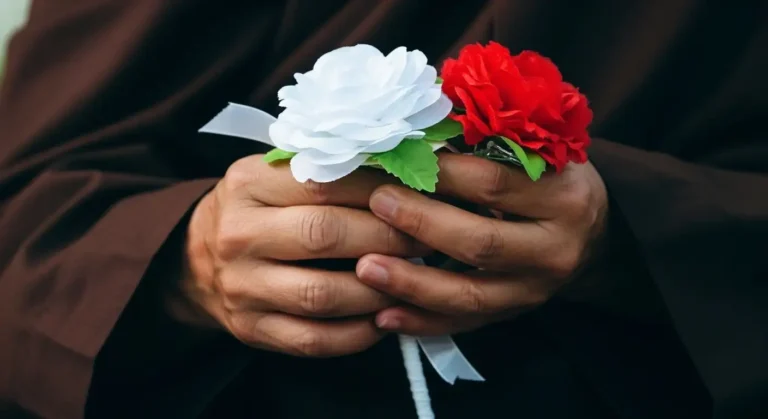
II. Key Activities and Rituals
1. The Rose Ceremony (Bông Hồng Cài Áo)
This is the most touching and public ritual of Lễ Vu Lan.
Red Rose: Participants whose mothers are still alive wear a red rose on their shirt, symbolizing luck, happiness, and the continued presence of maternal love.
White Rose: Those whose mothers have passed away wear a white rose, symbolizing respect, sorrow, and remembrance.
Significance: The ceremony serves as a poignant reminder of the preciousness of parental presence and encourages profound gratitude.
2. Going to Pagodas and Temples
The 15th day of the 7th lunar month is the busiest day of the year for Buddhist temples.
Prayers and Offerings: Devotees visit temples to offer incense, flowers, fruits, and prayers for the health and longevity of their living parents and for the peaceful repose of their ancestors’ souls.
Vegetarian Meals: Many observe the tradition of eating vegetarian meals (ăn chay) on this day as an act of compassion and to purify the body and soul.
3. Offerings to Wandering Souls (Xá Tội Vong Nhân)
This day is also called Wandering Souls’ Day and is separate from the ancestor worship.
Outdoor Altars: Families set up outdoor altars with offerings (salt, porridge, rice, paper clothes, and votive paper money) specifically for the wandering souls who have no relatives to worship them. This act of charity is a way to accumulate merit and prevent misfortune.
Burning Votive Paper: Large amounts of votive paper goods (money, houses, cars, electronics) are ceremonially burned, believing the smoke guides these items to the spirits in the afterlife.
4. Releasing Lanterns
In certain regions, especially coastal towns like Hoi An and areas along major rivers, floating lantern ceremonies take place at night.
Lighting the Way: Small, colorful paper lanterns are lit and released onto the water, representing prayers for ancestors and symbolically lighting the way for wandering spirits to find their path to nirvana or rebirth.
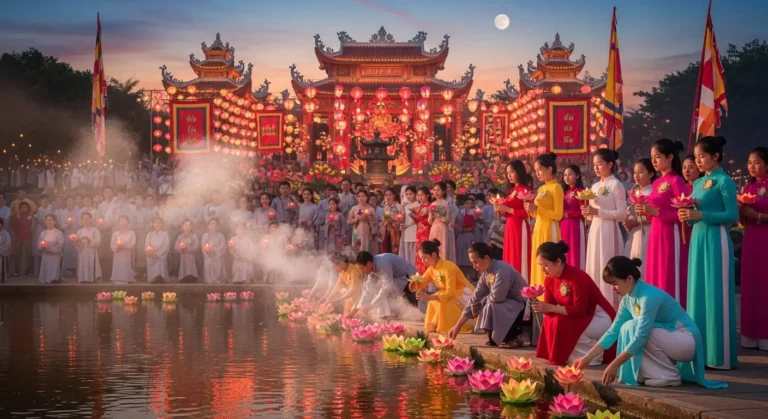
III. Traveler's Practical Guide
| Guide Field | Details |
|---|---|
| Atmosphere | Solemn and Spiritual: The atmosphere is contemplative, respectful, and family-oriented. While there is public activity, it is not a festive, noisy celebration like Tết Nguyên Đán or Tết Trung Thu. |
| Best Place to See | Pagodas and Temples: To witness the most authentic rituals and the Rose Ceremony, visit local Buddhist pagodas in the early morning or late afternoon. Be respectful, wear modest clothing, and maintain silence during ceremonies. |
| Business Operations | No Impact: Lễ Vu Lan is a cultural and spiritual holiday, not an official public holiday. All regular businesses, transportation, and services operate as normal. |
| Cultural Tip | Show Respect: Avoid interrupting prayer services or pointing directly at altars. If you are offered a rose, understand the profound meaning of whether it is red or white, and wear it respectfully if you accept. |
| Unique Experience | Look for vegetarian restaurants (quán chay) that offer special menus for the festival month. Participating in a simple vegetarian meal is a great way to respect the local customs. |
